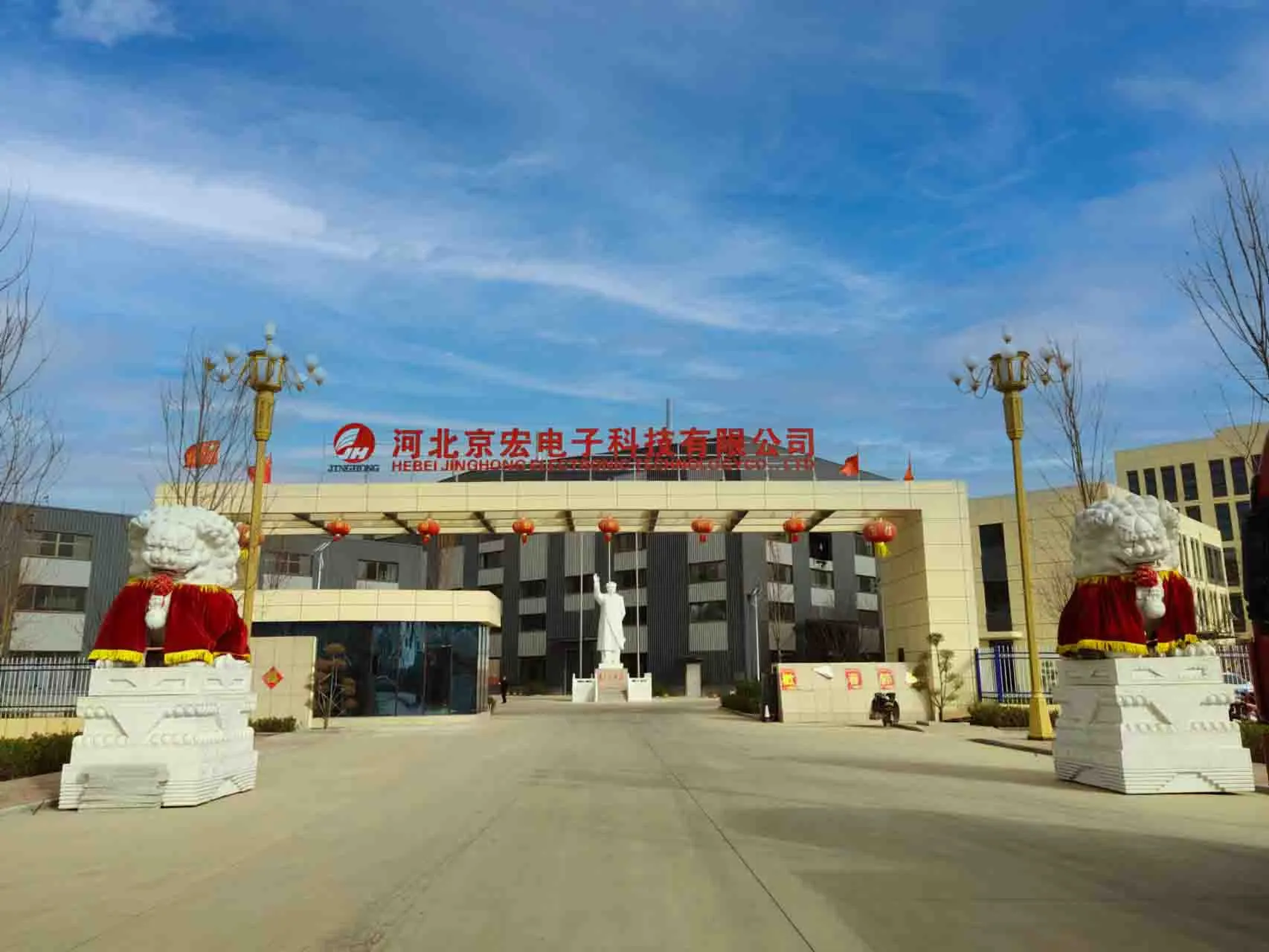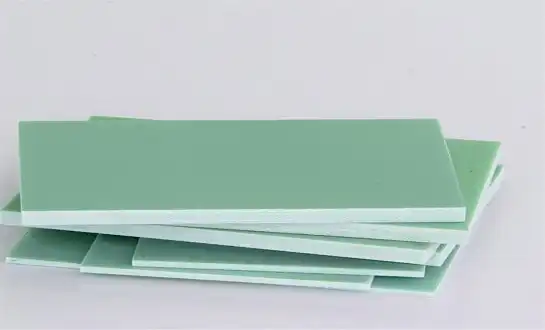Adapting to the Needs of 5G, IoT, and Miniaturization
Enhanced Signal Integrity for High-Frequency Applications
With the global deployment of 5G networks, FR4 epoxy resin sheets are being optimized to support high-frequency applications. Manufacturers are producing low-loss FR4 variants with enhanced dielectric properties, which significantly improve signal integrity and reduce attenuation. These advanced materials minimize distortion and maintain stable electrical performance, which is essential for the fast data transmission and low-latency requirements of 5G devices and infrastructure. By ensuring reliable high-frequency operation, these FR4 sheets enable next-generation communication technologies and support the performance of increasingly sophisticated electronic systems.
Thinner and More Flexible FR4 Sheets
The ongoing miniaturization of electronic devices drives the development of thinner and more flexible FR4 laminates. These ultra-thin sheets allow designers to create compact, lightweight devices without sacrificing mechanical strength or electrical reliability. Such FR4 innovations are particularly important for wearable technology, portable electronics, and compact IoT devices, where every millimeter of space matters. By combining flexibility with durability, these materials support intricate PCB layouts and multilayer designs, enabling designers to pack more functionality into smaller form factors while maintaining consistent performance and reliability.
Improved Thermal Management for Dense PCB Designs
As IoT devices and compact electronics become increasingly sophisticated, effective thermal management becomes critical to maintain reliability. Modern FR4 epoxy resin sheets are being developed with improved thermal conductivity and embedded heat-dissipating features. These advancements allow for denser PCB layouts and higher component integration without risking overheating or performance degradation. Enhanced thermal management ensures long-term operational stability, protects sensitive components, and allows designers to meet the demands of high-density, high-performance electronics in 5G, IoT, and miniaturized device applications.
Will New High-Frequency Materials Challenge Its Dominance?
Emergence of Alternative High-Frequency Substrates
Although FR4 remains the predominant material in the PCB industry, alternative high-frequency substrates are increasingly entering the market as potential competitors. Materials such as Rogers laminates, PTFE-based sheets, and ceramic-filled hydrocarbon composites provide superior electrical performance at very high frequencies, reducing signal loss and improving impedance stability. Despite these advantages, their significantly higher costs and complex manufacturing requirements limit their large-scale adoption. Consequently, while these materials serve niche applications, FR4 continues to dominate due to its widespread availability, proven performance, and cost efficiency.
FR4's Adaptability and Cost-Effectiveness
FR4 epoxy resin sheet maintains a strong market position due to its remarkable adaptability and cost-effectiveness. Manufacturers are actively refining FR4 formulations to enhance its high-frequency electrical performance, narrowing the gap with more expensive alternative substrates. The established manufacturing infrastructure, coupled with consistent quality and scalability, ensures that FR4 remains a reliable choice for both standard and moderately high-frequency applications. Its ability to balance performance, production efficiency, and cost makes FR4 likely to retain dominance in the PCB market for the foreseeable future.
Hybrid Solutions Combining FR4 with High-Performance Materials
A growing trend in PCB design is the use of hybrid solutions that integrate FR4 with specialized high-frequency materials. In these designs, FR4 is utilized for non-critical layers, while high-performance substrates are applied only where superior signal integrity is required. This strategy allows manufacturers to optimize cost and performance simultaneously, maintaining FR4’s relevance even in advanced electronic applications. By combining the affordability of FR4 with the capabilities of high-frequency materials, hybrid PCBs provide a practical solution for balancing performance demands, manufacturing efficiency, and budget constraints.
The Role of Improved Thermal and Mechanical Grades
High-Temperature FR4 Variants
The evolution of FR4 epoxy resin sheets includes the development of high-temperature variants capable of withstanding elevated operating conditions. These advanced formulations maintain mechanical and electrical stability in environments such as automotive electronics, aerospace systems, and industrial machinery, where consistent thermal performance is critical. By extending the thermal tolerance of FR4, these variants allow manufacturers to use the material in high-power, high-heat applications without compromising reliability. This innovation broadens FR4's applicability, ensuring its continued relevance in demanding electronic and industrial sectors.
Enhanced Mechanical Strength for Flex-Rigid Applications
With the increasing complexity of modern electronic devices, there is a rising demand for flex-rigid PCB designs. FR4 manufacturers are developing specialized grades with enhanced mechanical properties, offering improved flexibility, durability, and resilience. These materials allow designers to produce robust PCBs that can endure repeated bending, flexing, and mechanical stress without cracking or losing functionality. By combining structural integrity with adaptability, these FR4 variants support versatile and compact PCB layouts, meeting the needs of next-generation electronics that require both performance and reliability in challenging form factors.
Integration of Nano-Materials for Property Enhancement
Incorporating nano-materials into FR4 epoxy resin sheets represents a promising advancement in material engineering. Nano-fillers can significantly improve thermal conductivity, mechanical strength, and electrical performance, enhancing the overall capabilities of standard FR4. This innovation allows manufacturers to approach or match the performance of more expensive specialty substrates while retaining cost advantages. By leveraging nano-material integration, FR4 can meet the evolving demands of high-performance electronics, enabling the development of next-generation PCBs that combine reliability, efficiency, and durability in compact and high-density designs.
Conclusion
The future of FR4 epoxy resin sheet in global electronics manufacturing looks promising and dynamic. As the industry continues to evolve, FR4 is adapting to meet new challenges and requirements. Its versatility, cost-effectiveness, and ongoing improvements ensure its continued relevance in the electronics industry. While new materials may emerge for specialized applications, FR4's adaptability and widespread use make it likely to remain a cornerstone of PCB manufacturing for years to come. Manufacturers and engineers should stay informed about these developments to leverage the full potential of FR4 in their future designs.
FAQs
What makes FR4 epoxy resin sheet so popular in electronics manufacturing?
FR4 is widely used due to its excellent balance of electrical insulation, mechanical strength, and flame-retardant properties. It's cost-effective, versatile, and suitable for a wide range of applications, from simple single-layer PCBs to complex multilayer boards.
How is FR4 adapting to high-frequency applications?
Manufacturers are developing low-loss FR4 variants with improved dielectric properties, enabling better signal integrity at higher frequencies. This makes FR4 more suitable for 5G and other high-frequency applications.
Are there environmentally friendly alternatives to traditional FR4?
Yes, manufacturers are developing halogen-free FR4 variants that maintain flame-retardant properties without using environmentally harmful chemicals. These eco-friendly options are becoming increasingly popular in the industry.
Choose J&Q for Your FR4 Epoxy Resin Sheet Needs
J&Q, with over 20 years of experience in producing and selling insulating sheets, is your trusted FR4 epoxy resin sheet supplier. Our extensive expertise in foreign trading and logistics allows us to provide comprehensive, one-stop services to meet all your FR4 needs. For high-quality FR4 sheets and expert guidance, contact us at info@jhd-material.com. Choose J&Q for reliability, quality, and superior customer service in FR4 epoxy resin sheet manufacturing.
References
Johnson, R. (2022). "Advancements in FR4 Materials for Next-Generation Electronics". Journal of Electronic Materials, 51(3), 1423-1437.
Smith, A. et al. (2023). "The Impact of 5G on PCB Materials: Challenges and Opportunities". IEEE Transactions on Advanced Packaging, 46(2), 215-228.
Lee, S.H. (2021). "Thermal Management Strategies for High-Density PCB Designs". International Journal of Thermal Sciences, 168, 107052.
Zhang, Y. et al. (2023). "Nano-Enhanced FR4 Composites: Properties and Applications". Composites Science and Technology, 229, 109680.
Brown, T.M. (2022). "Environmental Considerations in PCB Manufacturing: A Review of Eco-Friendly FR4 Alternatives". Journal of Cleaner Production, 330, 129751.
Garcia, L. et al. (2023). "The Future of FR4 in Automotive Electronics: Meeting the Challenges of E-Mobility". SAE International Journal of Passenger Cars - Electronic and Electrical Systems, 16(1), 39-52.






